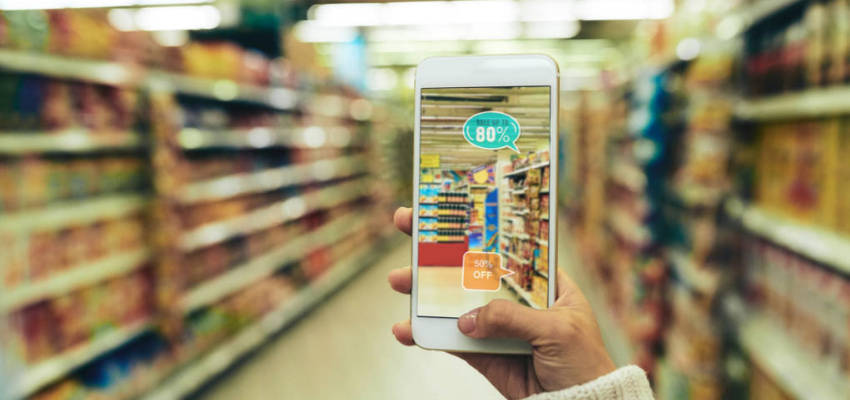Show:
6 Tech Investments to Make a Better Customer Shopping Experience
Even in an age dominated by e-commerce, the allure of in-person shopping remains strong. After all, physical stores offer something that online shopping can’t: the opportunity to engage all the senses.
When at a brick-and-mortar establishment, customers can touch and feel products, try them on, and even take them home immediately. And beyond that, the social experience of shopping and the personalized interactions with knowledgeable staff make physical stores irreplaceable for many shoppers. For retailers, this means that there is a real opportunity to invest in creating an in-store experience that stands out.

Retailers today also have more tools than ever to enhance the customer journey thanks to contemporary technological advancements. You’ll find tech solutions to help you with everything from streamlining your operations to offering more tailored services, and these tools do much more than just make running your store easier on the back end. They also have the potential to improve the way customers interact with your offerings by leaps and bounds. Knowing that, you’ll want to invest in the right technologies both to boost immediate customer satisfaction and encourage long-term loyalty, which means more sales for your business in the long run.
Here are some key technology investments that can help a retailer like you create a better and more customer-centric shopping experience—all towards modernizing your store, enhancing efficiency, and motivating your customers to come back for more:
1. Point-of-Sale Systems
The checkout process is often the last point of contact customers have with your store, and it should leave a positive impression. Upgrade to a modern point-of-sale (POS) system and you’ll find that it’s more than just a place to complete transactions.
Cloud-based and mobile systems empower your sales staff by providing instant access to inventory data, which they can utilize to assist customers more efficiently. These systems also support various payment methods, including mobile wallets and contactless payments, so it’s easier for customers to complete their purchases in whatever way suits them best.
Maya Business’s Maya Terminal is the best in-store payment solution for retailers located in the Philippines. This solution improves upon traditional card payment terminals by accepting every form of digital payment currently used in the country, from QR payments to e-wallet transfers and other emerging forms of payment. Maya Terminal is also widely lauded for being fast, user-friendly, and easy to integrate with electronic cash register (ECR) systems, so your staff shouldn’t find it hard to serve higher volumes of customers in shorter amounts of time.
2. Virtual and Augmented Reality
Incorporating immersive technology like virtual and augmented reality (VR and AR) can also elevate the shopping experience by blurring the lines between the physical and digital worlds. Imagine a customer stepping in front of a smart mirror and instantly seeing how a jacket would look in different colors or sizes without trying it on. AR even allows shoppers to visualize how furniture would fit in their homes before they make a purchase. These interactive experiences engage customers in a way that traditional retail displays cannot, making the buying process both fun and practical for them.

3. Real-Time Inventory Management Systems
Few things are more frustrating for a customer than finding out that the item they want is out of stock. You can eliminate this problem with real-time inventory management systems that offer up-to-the-minute information on product availability.
Consider implementing RFID technology or smart shelving solutions to ensure that both customers and staff have access to accurate stock levels at all times. Not only does this reduce customer disappointment, but it also improves the efficiency of your store’s operations by preventing stock shortages or overstocking.
4. Queue Management Systems
Long lines are a surefire way to frustrate customers and drive them out the door before they even make a purchase. Luckily, virtual queuing systems can turn waiting into a less stressful experience.
Instead of standing in line, customers can join a virtual queue using their phone and browse freely while they wait for their turn. Real-time updates keep them informed, and when it’s time, they can simply head to the service desk or checkout without feeling like they wasted any time. On top of maximizing customers’ shopping opportunities, this gives them a more relaxed in-store experience overall.
5. Customer Service Chatbots
Stores that can provide personalized customer service 24/7 without additional staff have a major advantage over their competitors. In-store chatbots, whether via kiosks or integrated into your mobile app, can help you handle common customer queries, assist with product recommendations, and provide real-time information on store policies or promotions. Explore AI-driven assistants to reduce the burden on your team and ensure that customers receive consistent, helpful service at any time.

6. Omnichannel Integration
Customers today also expect a seamless experience between online and in-store shopping. A unified commerce system is the key to delivering that experience to them perfectly.
When your inventory, customer data, and orders are all connected across platforms, you can offer flexible options like buy-online-pick-up-in-store (BOPIS), easy returns, and consistent pricing. Integrated systems also give your team access to customer profiles and purchasing histories, which in turn can facilitate more personalized interactions. Whether your customer is shopping online or stepping into your store, they’ll appreciate the continuity in their experience.
As technology continues to evolve, the most successful retailers will be those who prioritize the customer experience through smart, impactful investments. If you adopt the right tech solutions, you can transform your store into a place that exceeds customer expectations.
Think of these investments as more than simply part of an effort to keep up with trends. Making good on them now will put your business in a good position to set the standard for the future of retail.

 Return to Previous Page
Return to Previous Page








